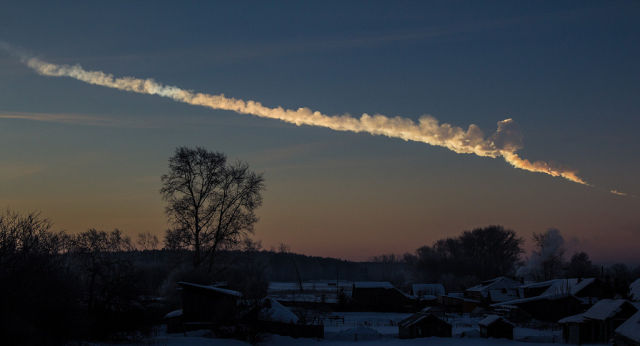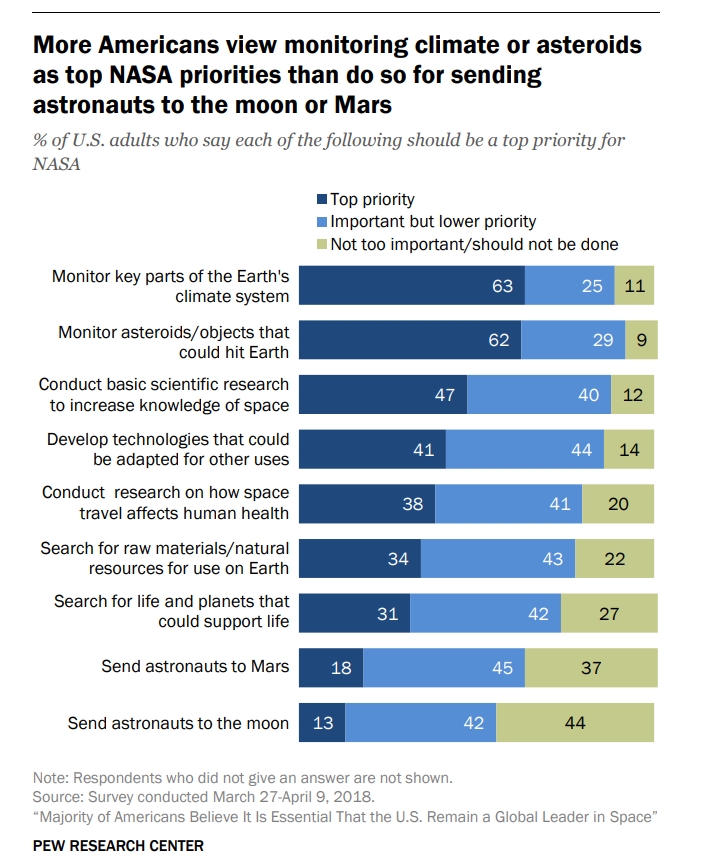
The Trump administration has vowed to make America great again in spaceflight, and the centerpiece of its space policy to date has been a re-prioritization of human spaceflight as central to NASA’s activities. As part of this initiative, the White House has sought to reduce funding for satellites to observe environmental changes on Earth and eliminate NASA’s office of education.
However, a new survey of 2,541 Americans by Pew Research Center, which aims to represent the views of US adults, finds that these views appear to be out of step with public priorities.
The survey asked respondents about their top priorities for NASA, and the highest support came for “monitor key parts of the Earth’s climate system” (63 percent) and “monitor asteroids/objects that could hit the Earth” (62 percent). Sending astronauts to Mars (18 percent), and the Moon (13 percent), lagged far behind as top priorities for respondents.
“We found that to be pretty surprising,” said Cary Funk, who led the study. This is partly because a focus on crewed missions has been such a highly visible facet of NASA past exploration program, and because the agency has made a big deal out of sending humans to Mars and, more recently, a human return to the Moon. “The tricky part is that we don’t have this kind of data in the past,” she said. “We haven’t asked the public a whole lot about other missions that the agency is engaged in.”

What is striking about these results is that public priorities, at least according to the Pew study, are pretty much the inverse of NASA’s spending priorities, which are set by the White House and Congress. NASA spends the largest chunk of its budget, approximately $4 billion annually, on developing a large Space Launch System rocket, its ground systems, and the Orion spacecraft to build the foundation of a program to send humans to the Moon and Mars. Secondarily, NASA’s planetary science program has recently prioritized the search for life on Mars and ocean worlds deeper in the Solar System, such as Jupiter’s moon, Europa.
Asteroids and climate
“The vast majority of the public thinks that we should have a space program that saves Earth,” said Phil Larson, a former Obama White House official who now is assistant dean at the University of Colorado College of Engineering. “That means funding climate research and ensuring that we can track all threatening objects from space and have a plan for what to do with them—in essence, be smarter than the dinosaurs.”
By contrast, the White House and Republicans in Congress, perhaps most notably Texas Senator Ted Cruz, have sought to cut funding for Earth-science-related work at NASA. Moreover, the agency spends almost no money on finding threatening asteroids. The agency’s Planetary Defense Coordination Office has an annual budget of about $50 million to find, catalog, and study asteroids that could potentially threaten Earth.

